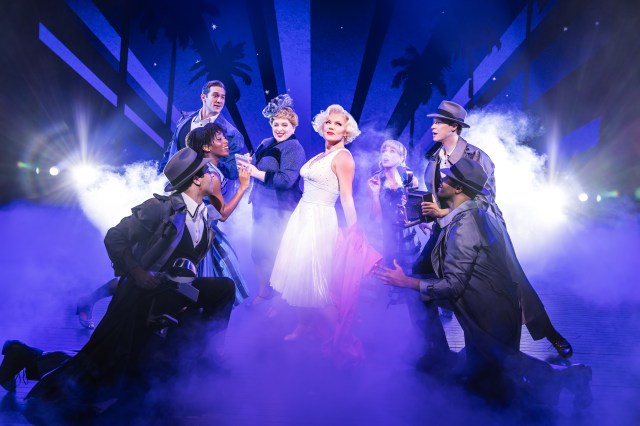Designing an Acid Trip Onstage: The Hallucinogenic Set of Flying Over Sunset
Beowulf Boritt reveals some of the secrets hiding onstage at the Vivian Beaumont Theatre.
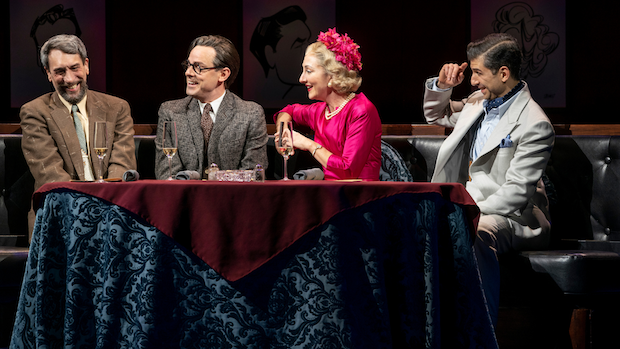
(© Joan Marcus)
The pandemic has not slowed down set designer Beowulf Boritt. This past year, he has designed scenery for several live productions (including Merry Wives in the Park), written a book about scenic design (to be released this coming August), and started a new organization to provide grants to early career designers, with the goal of diversifying the stable of theatrical designers on Broadway.
His most recent Broadway set is for the new musical Flying Over Sunset, which follows Cary Grant, Aldous Huxley, Clare Boothe Luce, and Gerald Heard as they experiment with LSD. With music by Tom Kitt, lyrics by Michael Korie, and a book by James Lapine (who also directs) this unlikely musical theatricalizes the acid trips of these famous people from the 1950s, which provides both challenges and opportunities for any designer.
"I have never partaken, and I asked James if that would be a problem," says Boritt about his lack of personal research. "He said, 'Don't worry. I've done enough LSD for all of us.'"
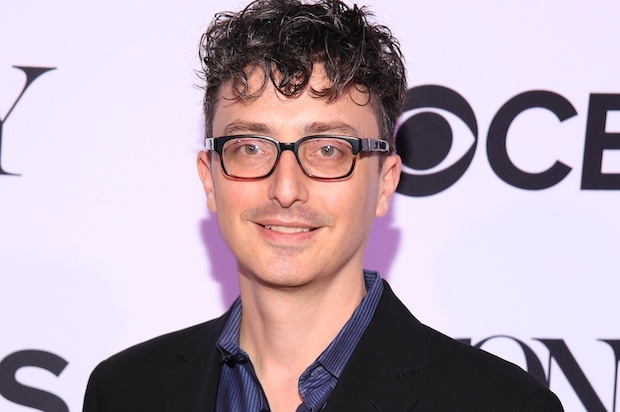
(© Tricia Baron)
Hallucinogens are the sexy hook of Flying Over Sunset, but the musical delves into grief, childhood trauma, and the capacity of the human mind to invent solutions to those problems. "This show is about LSD the way Hamlet is about Danish politics," insists Boritt. "It's about the human mind and the power of our imagination."
With that in mind, Boritt resolved to create a set that conveys the vastness and dynamism of the human brain. He was fortunate to be returning to the Vivian Beaumont Theatre, a Broadway stage with unparalleled depth, but also a thrust configuration that allows for a surprising amount of intimacy (Boritt first designed at the Beaumont for Act One, a set that earned him a Tony Award). He collaborated closely with lighting designer Bradley King and projection designer Benjamin Pearcy to create an onstage world that invites the audience along for the ride as our central characters are tripping balls.
You can see some of the scenes Boritt and his fellow designers came up with below, along with his commentary.
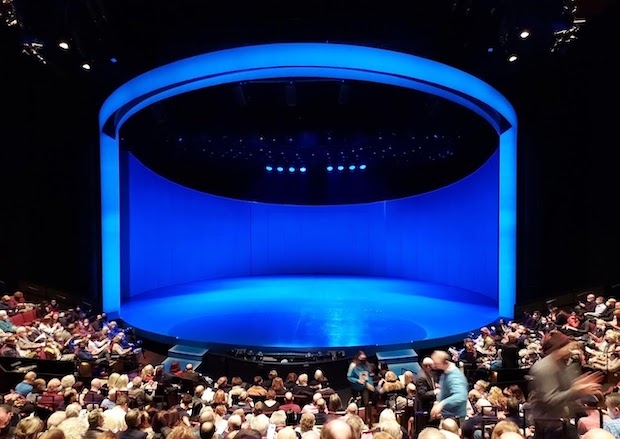
(© Beowulf Boritt)
"It started from wanting to provide the white page. The blank canvas," Boritt says about the opening look, referring to another James Lapine musical.
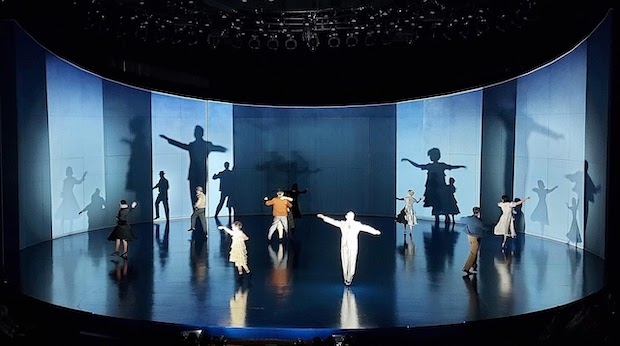
(© Beowulf Boritt)
"And then we paint on it with shadow in the opening moments."
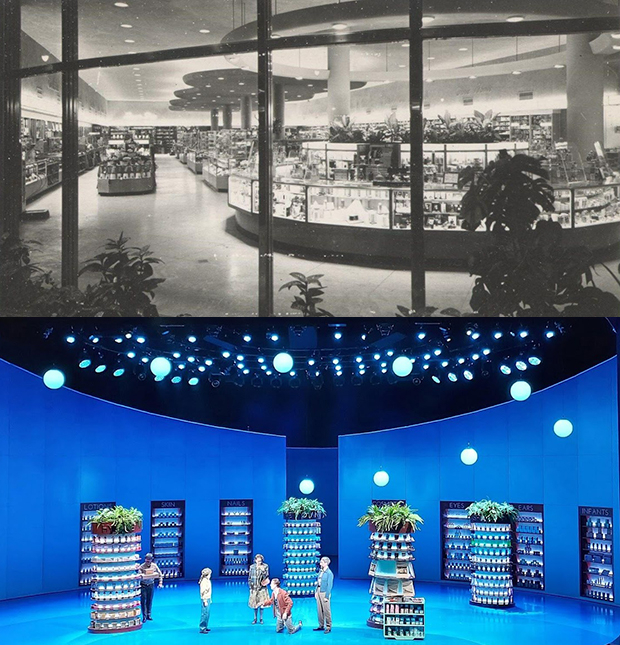
Below: That same store as it is depicted in Flying Over Sunset.
(© Beowulf Boritt)
"I had a lot of false starts with this space, because I kept designing a Duane Reade and it just didn't seem magical enough. It was hard to find photos of the actual store. I finally found an old postcard. It looks like the cosmetics floor at Saks. It's like a museum. Gorgeous. It's this midcentury modern strange spaceship of a store. That was a jumping-off point for this scene."
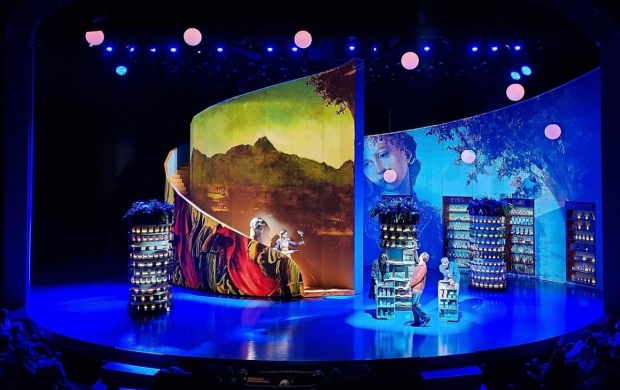
(© Beowulf Boritt)
"Scenery doesn't usually operate this way. In a normal Broadway theater, you just don't have the space to make something this big in such an odd shape move the way it does. From above, it looks like the shape of an orange slice. What we do is drop a pin into the floor, and there's a motor that pivots the unit off of that pin. The reason we have so much flexibility is that we have multiple pivot points, so it swings out in two different positions."

(© Beowulf Boritt)
"This moment is one of my favorites in the show. The globes float through space and the walls of the space start to breathe in and out like lungs. These giant walls are moving three feet upstage and three feet downstage through the whole segment."
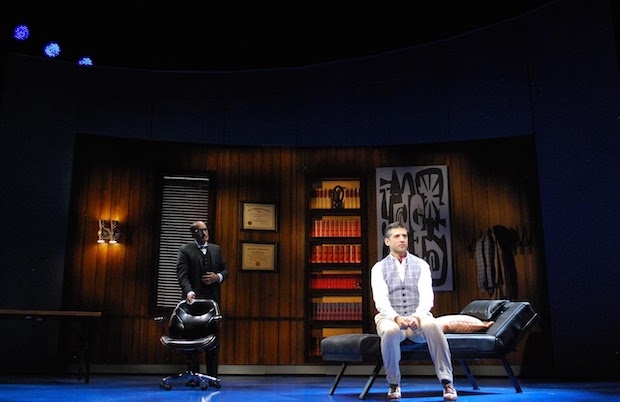
(© Beowulf Boritt)
"This set is full of tricks that no one saw. Originally, since this is Tony's big tap number, we wanted to put a lot of special effects around it…"
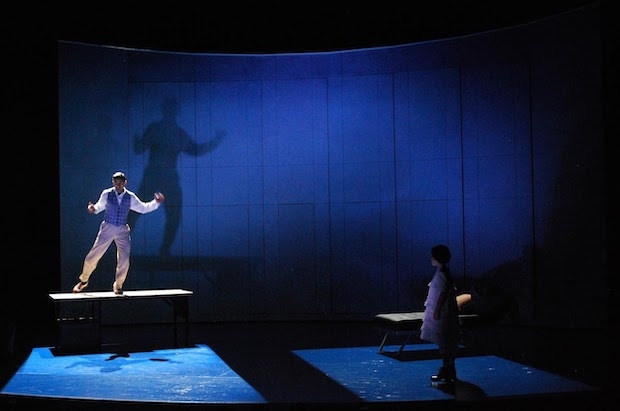
(© Beowulf Boritt)
"…But back before the pandemic, we realized that his dance is so incredible, we don't really need to do much else. So we cut all the tricks."
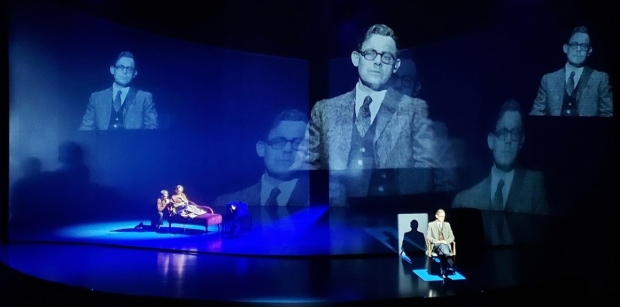
(© Beowulf Boritt)
"We always planned to project the TV interview on a scrim, but we found we got this interesting double-image that went through the scrim and hit the set upstage. So we began to replicate that all over the set. It tries to speak a little bit to the power of TV."
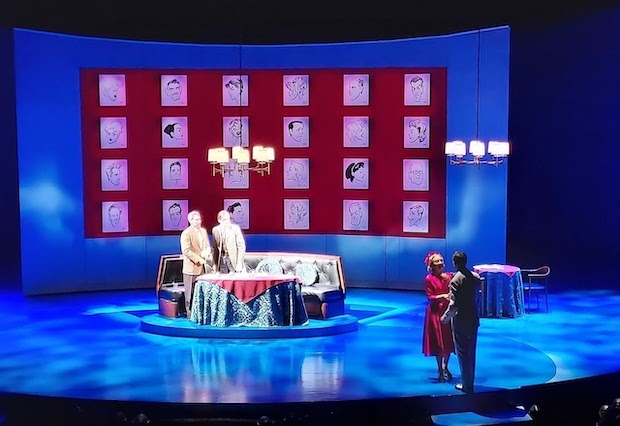
(© Beowulf Boritt)
"We got Squigs to do these caricatures for us, which was fun. We picked out a bunch of movie stars. And hidden amongst them are James Lapine, Tom Kitt, and Michael Korie."
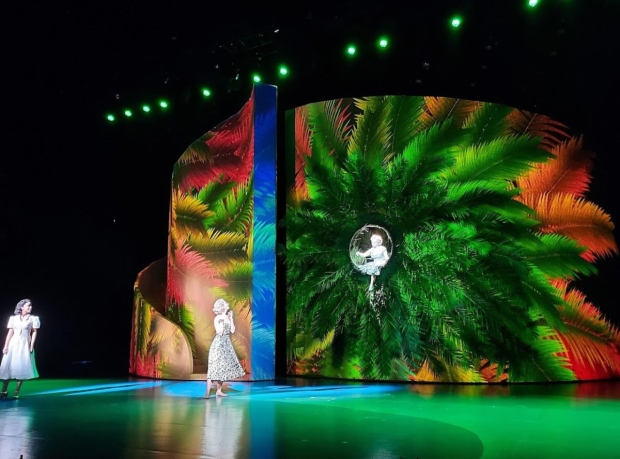
(© Beowulf Boritt)
"The props guys at Lincoln Center, led by Karl Rausenberger, made this for me. We bought a bunch of fake palm leaves and stapled them onto the set. And we got spring steel, which is this bendy flexible steel, and they tied it onto the palm leaves. And then they attached fishing line to it, so you pull the strings and it curls up and you release them and it opens. Then Ben Pearcy projected more around it, but it's literally a guy standing in there and pulling a rope. As with most great scenic effects, it's actually very simple."
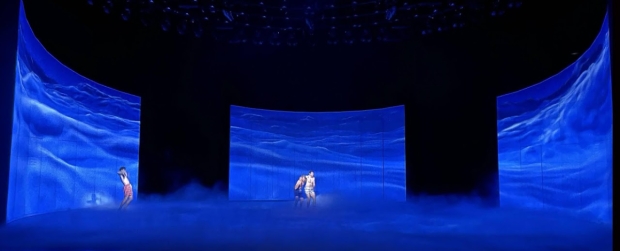
(© Beowulf Boritt)
"This is where we open as big as we can possibly be. The upstage piece is 75 feet from the front of the stage at this point. The side pieces are pulled open to a wider view, and dry ice covers the stage. [Projection designer] Ben Pearcy is doing most of the work at this point."
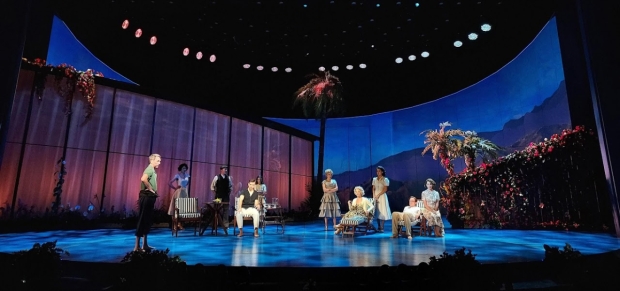
(© Beowulf Boritt)
"Instead of doing plexiglass, which is what you would normally do onstage, the shop said we had enough time to order tempered glass all made to the exact size we need. So it makes the reflections perfect and beautiful in a way that plastic doesn't."
Flying Over Sunset closes this Sunday, January 16.









